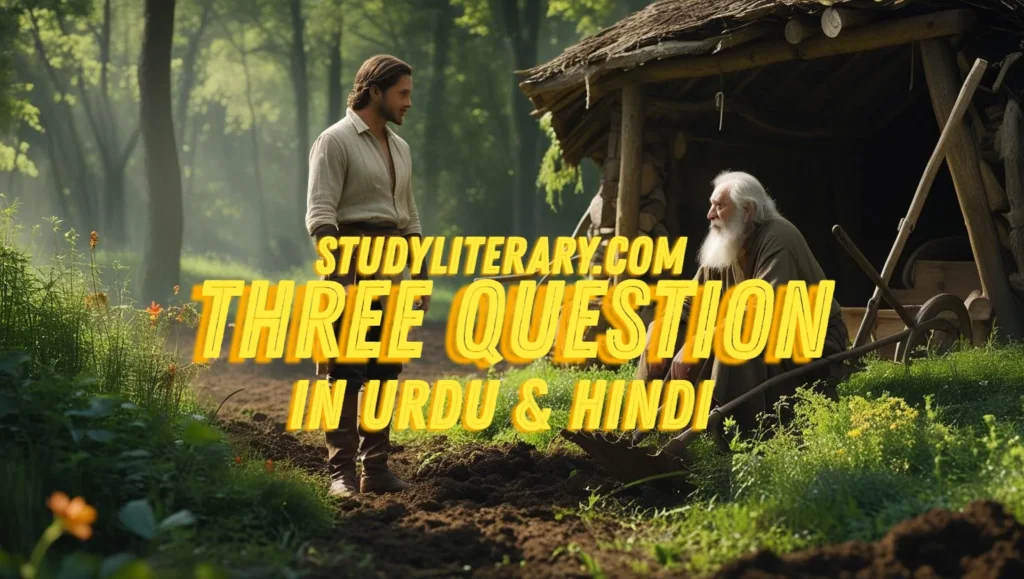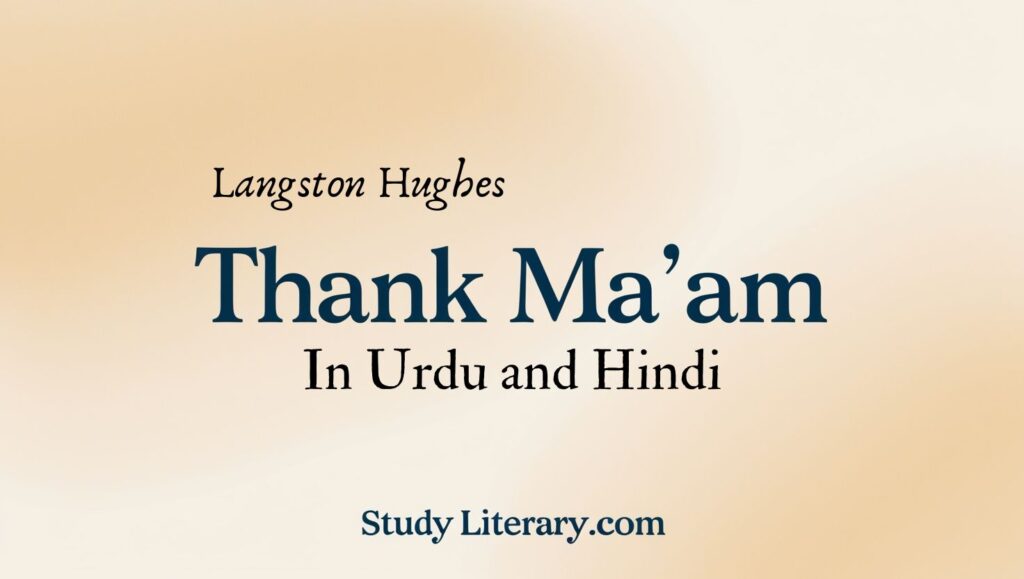
The Second Coming Line by Line Explanation and Critical Analysis
Line 1:
“Turning and turning in the widening gyre”
Explanation: The word “gyre” refers to a spiral or circular movement. The poet uses this image to describe how things are spinning out of control. The circle is widening, symbolizing the growing chaos and disorder in the world.
Critical Analysis: The repetitive and widening motion suggests instability and confusion. The world is no longer in balance, indicating that the existing order is breaking apart.
Line 2:
“The falcon cannot hear the falconer;”
Explanation: In falconry, the falconer controls the falcon, but here, the falcon has flown too far to hear its master. This symbolizes a breakdown in communication and control.
Critical Analysis: This line represents how society has drifted away from guidance and order. The falcon and falconer symbolize a disconnect between authority and the people. It’s a metaphor for a world where traditions, values, and systems no longer guide behavior.
Line 3:
“Things fall apart; the centre cannot hold;”
Explanation: The world is falling apart, and the central authority or foundation that should hold things together is failing.
Critical Analysis: This line expresses a deep sense of despair. The “centre” could symbolize the core values, morals, or institutions that hold society together. When they weaken, society descends into chaos.
Line 4:
“Mere anarchy is loosed upon the world,”
Explanation: Anarchy, or complete disorder, is being unleashed on the world.
Critical Analysis: The use of “mere” suggests that this chaos is trivial yet widespread, indicating that the poet sees this disorder as inevitable and unstoppable. It signifies the destruction of order and morality.
Line 5:
“The blooddimmed tide is loosed, and everywhere”
Explanation: The poet imagines a tide of blood that clouds vision, symbolizing widespread violence and destruction.
Critical Analysis: The image of a “blooddimmed tide” suggests a flood of violence and war. The idea of a “tide” being unleashed indicates that once this wave of destruction starts, it cannot be easily stopped.
Line 6:
“The ceremony of innocence is drowned;”
Explanation: The purity and innocence that once existed are overwhelmed and destroyed by this chaos.
Critical Analysis: “Ceremony of innocence” can symbolize values like goodness, justice, and truth, which are now lost in the overwhelming chaos. The drowning suggests that innocence is powerless against the destructive forces of the world.
Line 7:
“The best lack all conviction, while the worst”
Explanation: The people who are morally good are losing their confidence and willpower, while the evil or corrupt are filled with determination.
Critical Analysis: This line criticizes the moral decay of society. The good people, who should stand firm, are hesitant and unsure, while the wicked are driven by intense passion. It shows how the balance of power has shifted toward destructive forces.
Line 8:
“Are full of passionate intensity.”
Explanation: The worst people are the most active and intense, leading society into further chaos.
Critical Analysis: The poet points out the danger when misguided or immoral individuals are the most committed and energetic. This imbalance leads to the dominance of destructive ideologies.
Line 9:
“Surely some revelation is at hand;”
Explanation: The poet believes that a significant, perhaps divine, event or change is approaching.
Critical Analysis: The use of “revelation” suggests an apocalyptic moment, where the world may face a dramatic transformation or judgment. The poet hints that something major is on the horizon.
Line 10:
“Surely the Second Coming is at hand.”
Explanation: The poet directly references the Second Coming, which in Christian belief is the return of Christ, symbolizing the end of the world.
Critical Analysis: The poet suggests that the chaos in the world may be a sign of an approaching apocalypse. However, the tone is filled with uncertainty, questioning what kind of “coming” this will be – whether it brings salvation or more destruction.
Line 11:
“The Second Coming! Hardly are those words out”
Explanation: The poet emphasizes the dramatic nature of the Second Coming, expressing both awe and fear.
Critical Analysis: The exclamation marks and repetition create a sense of urgency and alarm. The poet seems to question whether this anticipated event will bring hope or more terror.
Line 12:
“When a vast image out of Spiritus Mundi”
Explanation: Spiritus Mundi refers to the collective spirit or soul of the world. From this arises a terrifying vision.
Critical Analysis: This line connects the poet’s vision to a universal consciousness, suggesting that what he sees is a manifestation of the world’s shared fears and anxieties. It implies that the chaos in society is giving birth to dark and powerful forces.
Line 13:
“Troubles my sight: somewhere in sands of the desert”
Explanation: The poet envisions a troubling image forming in a desert.
Critical Analysis: Deserts often symbolize emptiness and desolation. The troubling image in this barren landscape hints at something monstrous being born from this emptiness, a reflection of the world’s spiritual decay.
Line 14:
“A shape with lion body and the head of a man,”
Explanation: The poet describes a creature with the body of a lion and the head of a human.
Critical Analysis: The creature resembles the mythical Sphinx, symbolizing both power and mystery. The combination of a fierce animal and a human intellect suggests a dangerous and cunning force.
Line 15:
“A gaze blank and pitiless as the sun,”
Explanation: The creature’s eyes are emotionless and merciless, like the harsh, unblinking sun.
Critical Analysis: The blank gaze represents indifference and a lack of compassion. The comparison to the sun, which is powerful but unfeeling, suggests that this creature embodies relentless and destructive power.
Line 16:
“Is moving its slow thighs, while all about it”
Explanation: The creature moves slowly, hinting at deliberate and unstoppable power.
Critical Analysis: The slow movement adds to the sense of dread. The creature is in no rush, as if it knows that nothing can stop it. This represents the inevitable approach of destruction.
Line 17:
“Reel shadows of the indignant desert birds.”
Explanation: Angry desert birds fly around the creature, casting shadows.
Critical Analysis: The “indignant” birds symbolize nature’s disapproval of the monstrous creature. The shadows they cast create a dark, ominous atmosphere, adding to the sense of impending doom.
Line 18:
“The darkness drops again; but now I know”
Explanation: Darkness returns, symbolizing fear and uncertainty.
Critical Analysis: The return of darkness suggests that the brief moment of clarity has passed. However, the poet now understands something crucial – the nature of the chaos and what it signifies for the future.
Line 19:
“That twenty centuries of stony sleep”
Explanation: The poet describes how 2,000 years of spiritual dormancy have led to this moment.
Critical Analysis: The “stony sleep” represents a long period of ignorance, inaction, or spiritual stagnation. The world has been dormant for too long, and now something terrible is awakening.
Line 20:
“Were vexed to nightmare by a rocking cradle,”
Explanation: The dormant world has been disturbed into a nightmare, like a restless child in a cradle.
Critical Analysis: The “rocking cradle” symbolizes instability and disturbance. The world’s complacency has turned into a nightmare, possibly hinting that past comforts and beliefs are now the source of present horrors.
Line 21:
“And what rough beast, its hour come round at last,”
Explanation: The poet wonders what kind of monstrous creature is finally approaching after waiting for so long.
Critical Analysis: The “rough beast” is a powerful symbol of impending destruction. Its time has finally come, suggesting that the world’s moral decay has reached a tipping point where chaos and evil will dominate.
Line 22:
“Slouches towards Bethlehem to be born?”
Explanation: The creature is slowly making its way towards Bethlehem, a place known as the birthplace of Christ.
Critical Analysis: The reference to Bethlehem, traditionally associated with hope and salvation, is now linked to something dark and monstrous. The poet suggests that instead of a savior, the world is about to witness the birth of something destructive and terrifying.


